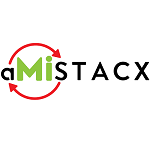

Overview

Product video
This is a repackaged open source software wherein additional charges apply for extended support with a 24 hour response time.
Node.js 18 on Amazon Linux 2023 provides a robust and reliable environment for building scalable server-side applications. This AMI is specifically optimized to leverage the advantages of Amazon Linux 2023, ensuring compatibility and performance.
Key Features:
- Latest NodeJS 18 Version: Benefit from the latest features and improvements in Node.js, including enhanced performance, better diagnostic capabilities, and support for new ECMAScript features.
- Optimized for AWS: Pre-configured with AWS best practices in mind, enhancing security, performance, and ease of integration with other AWS services.
- Easy Deployment: Seamlessly launch your Node.js applications in the cloud with minimal setup, allowing you to quickly scale your projects.
- Support for NPM and Yarn: Comes with package managers pre-installed, making dependency management straightforward and efficient.
Benefits:
- Scalability: Take advantage of AWS's elastic infrastructure to ensure your application can handle increased load effortlessly.
- Cost-Effective: Only pay for the resources you use, making it suitable for both small projects and large-scale enterprise applications.
- Long-Term Support: With access to extended support services, you can ensure your applications remain secure and up to date.
Use Cases:
- Web Applications: Perfect for developing RESTful APIs and full-featured web applications.
- Microservices: Deploy lightweight microservices architectures that are easily manageable and scalable.
- Real-Time Applications: Ideal for applications requiring real-time data processing, such as chat applications or live data visualization tools.
Utilize Node.js 18 on Amazon Linux 2023 to build efficient, high-performance applications while enjoying the benefits of a fully managed environment in the AWS cloud.
Try our most popular AMIs on AWS EC2
- Ubuntu 24.04 AMI on AWS EC2
- Ubuntu 22.04 AMI on AWS EC2
- Ubuntu 20.04 AMI on AWS EC2
- Ubuntu 18.04 AMI on AWS EC2
- CentOS 10 AMI on AWS EC2
- CentOS 9 AMI on AWS EC2
- CentOS 8 AMI on AWS EC2
- Debian 12 AMI on AWS EC2
- Debian 11 AMI on AWS EC2
- Debian 10 AMI on AWS EC2
- Debian 9 AMI on AWS EC2
- Red Hat Enterprise Linux 9 (RHEL 9) AMI on AWS EC2
- Red Hat Enterprise Linux 8 (RHEL 8) AMI on AWS EC2
- Red Hat Enterprise Linux 7 (RHEL 7) AMI on AWS EC2
- Oracle Linux 9 AMI on AWS EC2
- Oracle Linux 8 AMI on AWS EC2
- Oracle Linux 7 AMI on AWS EC2
- Amazon Linux 2023 AMI on AWS EC2
- Windows 2022 Server AMI on AWS EC2
- Windows 2019 Server AMI on AWS EC2
- Docker on Ubuntu 22 AMI on AWS EC2
- Docker on CentOS 10 AMI on AWS EC2
Highlights
- NodeJS 18 on Amazon Linux 2023 offers a streamlined environment for developing and running scalable applications. It combines the robust features of Node.js with the optimized performance and security of Amazon Linux, ensuring efficient resource utilization. This AMI is ideal for developers looking to leverage the latest LTS version of Node.js while benefiting from enhanced package management and system libraries provided by Amazon Linux.
- With built-in support for popular frameworks and libraries, this AMI simplifies the deployment process for web applications and microservices. The integration with AWS services, such as DynamoDB, S3, and Lambda, provides a seamless experience for building and scaling cloud-native applications. Developers can take advantage of the high availability and resilience of the AWS infrastructure while working within a familiar Node.js ecosystem.
- Security is a priority with this AMI, featuring timely updates and patches for both Node.js and the underlying Amazon Linux OS. This makes it suitable for enterprise applications that require stringent compliance and security measures. Additionally, it supports modern development practices, including CI/CD pipelines, making it a versatile choice for teams focused on rapid development and deployment cycles in the cloud.
Details
Typical total price
$3.853/hour
Features and programs
Financing for AWS Marketplace purchases

Pricing
- ...
Instance type | Product cost/hour | EC2 cost/hour | Total/hour |
|---|---|---|---|
t1.micro | $0.07 | $0.02 | $0.09 |
t2.nano | $0.07 | $0.006 | $0.076 |
t2.micro AWS Free Tier | $0.07 | $0.012 | $0.082 |
t2.small | $0.07 | $0.023 | $0.093 |
t2.medium | $0.14 | $0.046 | $0.186 |
t2.large | $0.14 | $0.093 | $0.233 |
t2.xlarge | $0.28 | $0.186 | $0.466 |
t2.2xlarge | $0.56 | $0.371 | $0.931 |
t3.nano | $0.07 | $0.005 | $0.075 |
t3.micro AWS Free Tier | $0.07 | $0.01 | $0.08 |
Additional AWS infrastructure costs
Type | Cost |
|---|---|
EBS General Purpose SSD (gp3) volumes | $0.08/per GB/month of provisioned storage |
Vendor refund policy
The instance can be terminated at anytime to stop incurring charges
Legal
Vendor terms and conditions
Content disclaimer
Delivery details
64-bit (x86) Amazon Machine Image (AMI)
Amazon Machine Image (AMI)
An AMI is a virtual image that provides the information required to launch an instance. Amazon EC2 (Elastic Compute Cloud) instances are virtual servers on which you can run your applications and workloads, offering varying combinations of CPU, memory, storage, and networking resources. You can launch as many instances from as many different AMIs as you need.
Version release notes
System Updates
Additional details
Usage instructions
Once the instance is running, connect to it using a Secure Shell (SSH) client with the configured SSH key. The default username is 'ec2-user'.
OS commands via SSH: SSH as user 'ec2-user' to the running instance and use sudo to run commands requiring root access.
Resources
Vendor resources
Support
Vendor support
Email support for this AMI is available through the following: https://supportedimages.com/support/ OR support@supportedimages.com
AWS infrastructure support
AWS Support is a one-on-one, fast-response support channel that is staffed 24x7x365 with experienced and technical support engineers. The service helps customers of all sizes and technical abilities to successfully utilize the products and features provided by Amazon Web Services.
Similar products



